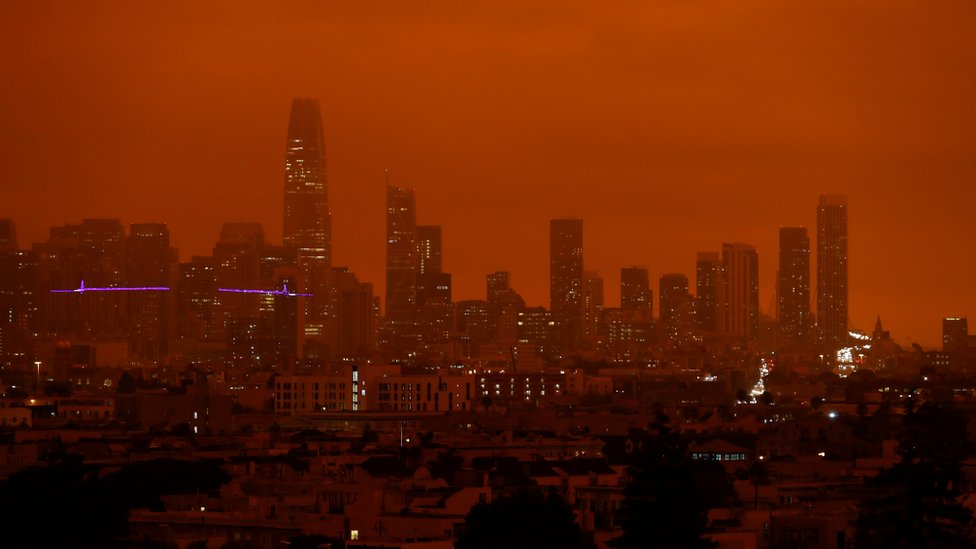
UK Met Office scientists are forecasting that 2021 will be a little cooler around the world, but will still be one of the top six warmest years.
The La Niña weather phenomenon will see temperatures edge down but greenhouse gases will remain the biggest influence.
Researchers say the world will likely be around 1C warmer than the pre-industrial era.
It will be the seventh year in a row close to or above this mark.
According to Met Office projections, the Earth’s temperature for 2021 will likely be between 0.91C and 1.15C above what they were in the years from 1850-1900 with a central estimate of 1.03C
The 2021 forecast is slightly lower than in recent years, due to the onset of the La Niña event in the tropical Pacific.
A La Niña develops when strong winds blow the warm surface waters of the Pacific away from South America and towards the Philippines.

In their place, colder waters from deep in the ocean come up to the surface.
It is expected to reduce sea-surface temperatures by 1-2C and will likely do enough to prevent 2021 from setting a new high mark.
“The global temperature for 2021 is unlikely to be a record year due to the influence of the current La Niña, but it will be far warmer than other past La Niña years such as 2011 and 2000 due to global warming,” said Prof Adam Scaife, head of long-range prediction at the Met Office.
Researchers say the impact of a natural cooling event like La Niña, while important, is hugely overshadowed by the warming driven by greenhouse gases in the atmosphere.
There was a strong La Niña in the year 1999-2000, but global temperatures have gone up by 0.4C in the years since then.
This is in line with the estimate of 0.2C warming per decade, attributed by the Intergovernmental Panel on Climate Change to human activities.

“The variability of the La Niña / El Niño cycle is the second most important factor in determining the Earth’s temperature but it is simply dwarfed by the forcing effect of increasing greenhouse gases in the atmosphere,” said Met Office scientist Dr Nick Dunstone.
The Met Office says that its experience in forecasting previous annual temperatures gives it confidence in next year’s projections.
A year ago, the agency estimated that 2020 would be 0.99C to 1.23C warmer than pre-industrial levels.
Data from January to October this year indicates that the annual temperature will be 1.17C above the 1850-1900 average.
2016 remains the warmest year on record with 2020 vying for second place with 2019.
According to a provisional assessment from the World Meteorological Organization, the warmest six years in global records dating back to 1850 have now all occurred since 2015. The Met Office expects that 2021 will edge out 2018 for sixth place.



